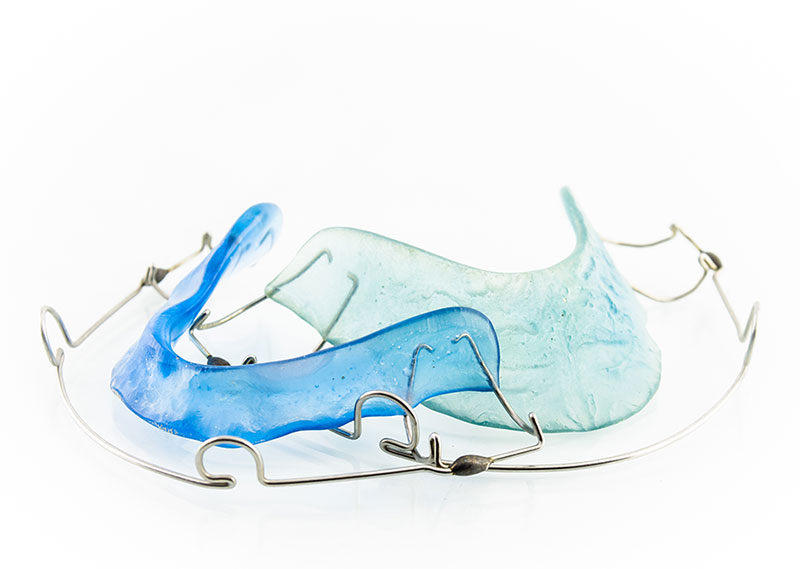Retainers are facilitated to hold the teeth in place once the braces are removed. It requires time for your teeth to adjust with the new setting of teeth. Retainer supports your teeth from moving from its position. Some retainers could be removable, and others could be fixed behind your teeth. Coming to the material – retainers could be of plastic or metal wires. Yet others could be made of rubber also.
Retention is accepted to be the most vital and necessary phase of orthodontic treatment. It is suggested to wear the retainers as advised by your dentist. It would ultimately reward you with a pearly white smile for life!
Types of Retainer
Clear Retainers – This type of retainers are most popular form widely used across the globe. Such retainers are used in patients who have all their teeth intact and had maintained good oral hygiene, when their braces were removed.
Hawley Retainers with Wire and Acrylic – This type of retainers is suggested for people whose teeth are missing or have gone under the knife for the jaw related issue. The acrylic present in the appliance enables the orthodontist to fix a false tooth to the retainer in place of missing tooth to capture the space that was earlier occupied by the missing tooth/teeth. Other than this it also provides a temporary aesthetic solution. Once the missing teeth are replaced by the orthodontist a clear retainer can be used, as retainer with fake teeth cannot be worn for whole day.
Bonded Wire – This type of retainers are used where over-crowding or over- spacing of teeth is involved prior to the treatment. Using this wire the inner part of the month or tongue surface or the four or six teeth of the front side is bonded, which remains invisible.
How Long Should you Wear Dental Retainer?
Orthodontists suggest that using dental retainers should be started instantly after removing the braces. Ideally it should be put on for all 24 hours in a day in the first week, and after that only at night while sleeping. They also instruct not to wear the retainers during sports and while consuming any staining or acidic food or fluid.
It is often recommended to wear it regularly for a stretch of 6 months to a year, and after this it should be placed as instructed by the dentist based on individual situations. If you do not wear your retainer as directed by the doctor, the teeth may relapse any time.
Associated Problems
For a few initial days of wearing this appliance you may feel some type of discomfort. It may happen that your mouth may become sore for some days. If you feel that the retainer is causing pain of hitting against your gums, you should immediately consult your orthodontist for adjusting the device properly to reduce discomfort.
You may also witness increased quantity of saliva formation. In the presence of a foreign body inside the mouth in the form of dental retainer, your salivary glands may get stimulated and create more saliva.
Your speech can also get somewhat affected in the initial few days but after this you will be accustomed to the situation as the tongue’s movement will be adjusted with the retainer.
Some Important Guidelines for Retainer
- You would be able to get rid of your retainer much earlier if you follow certain golden rules!
- You must wear it for at least 8 continuous hours or more for the first year.
- Store your retainers in the case specifically provided by the dentist to store it when not in use. Being out of the case it may be throne, lost, or damaged by anyone in the family or pets.
- Maintain the hygiene of the retainers by cleaning it by brush with toothpaste and facilitating denture tablets at least thrice a week to remove foul smell and surface build-up.
- Never soak your retainers in hot water, it may distort it.
- Take off your device when you are playing or having some staining drink of food.




